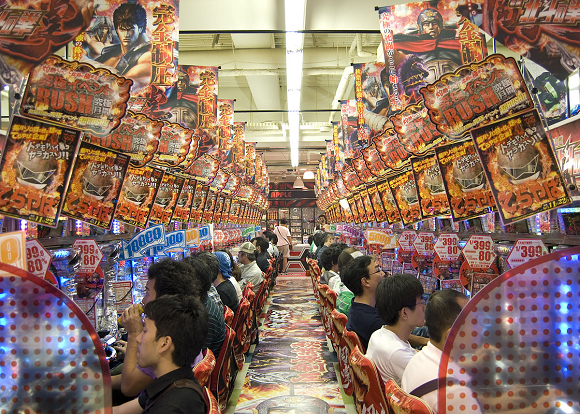
A grim mortality rate for pachinko parlor management companies shines a light on the poor health of the industry.
I’ve lived in the same neighborhood of Yokohama for more than a decade now, and right across the street from my train station is a pachinko parlor. I’ve never gone inside, and a recent study suggests that I’m not the only one for whom the allure of bouncing metal balls holds no strong allure.
The Tokyo-based Yano Research Institute recently released the results of its analysis of the pachinko industry, and some of the numbers don’t look so good . At the end of last December, researchers counted 10,258 pachinko halls in Japan, and while that’s definitely a lot, that’s how many were left over after 420 shut down during the year, meaning that roughly one in 25 pachinko halls closed their doors for good in 2017.
Even more startling is that 177 companies that manage pachinko parlors went out of business in 2017, with the remaining 3,244 meaning there was more than a five-percent mortality rate for pachinko operators during the year.
So what’s causing the drops? One thing researchers point to is the rapidly expanding number of entertainment options that people in Japan have access to. While the country was slow to embrace Internet surfing via PCs, smartphones have quickly become the norm, providing people anywhere in the country access to a nearly unlimited amount of reading material, video content, and games. This especially changes the entertainment landscape in rural areas, where massive pachinko halls used to often be just about the only leisure providers to be found.
There’s also the fact that no matter how many anime and video game franchises pachinko machine manufacturers license in an attempt to appeal to those hobbies’ younger fanbases, pachinko is widely seen as the pastime of stodgy middle-aged and older men. Japanese survey site Shirabee asked 235 men and women, all who said they enjoyed gambling, whether or not they felt like the money they’d spent on pachinko and other games of chance had been a waste, and 62.5 percent of respondents in their 20s said it had been, as did 63.1 percent of those in their 30s. Those numbers contrast with 48.8 percent of respondents in their 40s, 54.3 percent of those in their 50s, and just 46.5 percent of those 60 and above.
That gap in attitudes suggests that convincing younger Japanese people that sitting in a pachinko parlor is a fun way to spend the day is an uphill battle. Granted, some would argue that all of the randomized loot box microtransactions of wildly successful smartphone games are just as much a form of gambling as pachinko, but others would counter that at least in that case, the buyer knows he’s going to get some sort of video game goodies, whereas an unsuccessful pachinko session will leave you without even enough balls to trade in for a box of crackers, let alone the trinkets that you can secretly exchange for cash around the corner.
With more than 10,000 halls still left, it’s not like pachinko is going to disappear overnight. However, it’s estimated that the number of active pachinko players in Japan has dropped from 30 million in 1994 to just 9.4 million now, and if that trend continues, pachinko parlors might meet the same fate as sento (public baths), going from a ubiquitous part of Japanese cityscapes to a legitimate rarity.
Source: Niconico News via Jin, Gambling Journal
Top image: Wikipedia/Tischbeinahe
Insert images ©SoraNews24